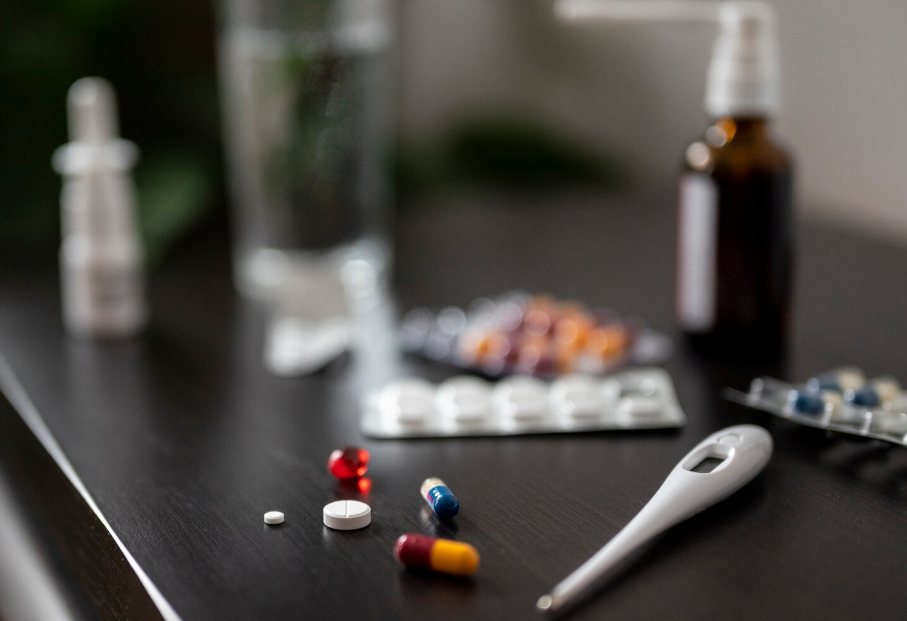Top 10 Cell Phone Addiction Statistics
- The average person spends over 4 hours a day on their phone.
- 60% of Americans admit to being addicted to their phones.
- 90% of smartphone users check their phone within an hour of waking up.
- 70% of smartphone users check their phone within an hour of going to bed.
- The fear of not having your phone, Nomophobia, affects 40% of the population.
- 1 in 5 drivers admit to checking their phone while driving.
- 50% of teenagers feel addicted to their phones.
- The average person checks their phone 58 times a day.
- 75% of people use their phone in the bathroom.
- 85% of millennials say their phone is their constant companion.

Important Smartphone Addiction Statistics
- The average person spends over 4 hours a day on their phone. This amounts to 28 hours a week and 1,456 hours a year.
- 60% of Americans admit to being addicted to their phones. This addiction is classified as Nomophobia, which is the fear of being without your phone.
- 90% of smartphone users check their phone within an hour of waking up. This can negatively impact our mood and productivity for the day.
- 70% of smartphone users check their phone within an hour of going to bed. This can negatively impact our sleep quality and cause insomnia.
- The fear of not having your phone, Nomophobia, affects 40% of the population. This can cause anxiety and stress when separated from our phones.
- 1 in 5 drivers admit to checking their phone while driving. This can lead to distracted driving and cause accidents.
- 50% of teenagers feel addicted to their phones. This can impact their social skills and mental health.
- The average person checks their phone 58 times a day. This can lead to decreased productivity and increased distraction.
- 75% of people use their phone in the bathroom. This can lead to the spread of germs and bacteria.
- 85% of millennials say their phone is their constant companion. This can lead to decreased face-to-face interaction and social skills.
Most Common Causes Of Cell Phone Statistics
- Social media: Social media is one of the most significant contributors to cell phone addiction. 63% of people check their social media within 15 minutes of waking up.
- Notifications: The constant barrage of notifications from apps and messages can be addicting. 46% of smartphone users say they feel "anxious" when they don't receive notifications.
- FOMO (Fear Of Missing Out): People often feel like they might miss out on something important if they're not constantly checking their phones. 56% of people say that FOMO contributes to their cell phone addiction.
- Boredom: Many people turn to their phones when they're bored or have nothing else to do. 75% of people admitted to using their phones as a distraction at work.
- Instant gratification: With just a few taps, we can get instant access to entertainment, information, and social interaction. This instant gratification can be highly addictive for some people. Studies show that dopamine levels in the brain increase when we use our phones.

Cell Phone Addiction Statistics by Age
- 50% of teenagers feel addicted to their phones.
- 27% of young adults aged 18-24 experience moderate to severe levels of cell phone addiction.
- 22% of adults aged 25-34 experience moderate to severe levels of cell phone addiction.
- 12% of adults aged 35 and above experience moderate to severe levels of cell phone addiction.
Cell Phone Usage Worldwide
- In 2021, there are approximately 7.9 billion mobile phone users worldwide.
- 66% of the world's population owns a mobile phone.
- Asia has the largest number of mobile phone users, with over 2.8 billion people owning a mobile device.
- China alone accounts for nearly 1.3 billion mobile phone users, making it the largest market for smartphones in the world.
- In Europe, there are over 700 million mobile phone users.
- North America has over 400 million mobile phone users.
- Latin America and the Caribbean have over 500 million mobile phone users combined.
- Africa has over 800 million mobile phone users, making it the fastest-growing market for mobile phones in the world.
- The Middle East has over 390 million mobile phone users.
- Smartphones make up approximately 56% of all global mobile devices.

Most Used Cell Phone Apps by Teenagers
- TikTok: 60% of teenagers use TikTok, making it the most popular app among teens.
- Snapchat: 55% of teenagers use Snapchat to communicate with friends and share photos and videos.
- Instagram: 50% of teenagers use Instagram to share photos and videos with their followers.
- YouTube: 46% of teenagers use YouTube to watch videos and listen to music.
- WhatsApp: 33% of teenagers use WhatsApp to message friends and family members.
- Facebook: 30% of teenagers still use Facebook, although its popularity has declined in recent years.
- Twitter: 12% of teenagers use Twitter to stay up-to-date on news and trends.
- Pinterest: 10% of teenagers use Pinterest for inspiration and ideas for fashion, food, and home decor.
- Discord: 9% of teenagers use Discord to communicate with other gamers while playing video games online.
- Reddit: 6% of teenagers use Reddit for memes, discussions, and news on various topics.
Most Used Cell Phone Apps Worldwide
- WhatsApp: With over 2 billion active users, WhatsApp is the most popular messaging app in the world.
- Facebook: Despite its declining popularity among teenagers, Facebook still has over 2.8 billion monthly active users worldwide.
- YouTube: With over 2 billion monthly active users, YouTube is the second most popular search engine after Google.
- WeChat: This Chinese app has over 1.2 billion monthly active users and is used for messaging, social media, and mobile payments.
- Instagram: With over 1 billion monthly active users, Instagram is the most popular photo-sharing app in the world.
- TikTok: The short-form video app has exploded in popularity in recent years and now has over 689 million monthly active users worldwide.
- Snapchat: The ephemeral photo-sharing app has over 500 million monthly active users globally.
- Twitter: The micro-blogging platform has over 330 million monthly active users and is used for news updates and discussions on various topics.
- Telegram: This secure messaging app has gained popularity due to its end-to-end encryption and now has over 500 million monthly active users worldwide.
- Zoom: The video conferencing app became an essential tool for remote work during the COVID-19 pandemic and now boasts over 300 million daily meeting participants.
The Impact of Cell Phone Addiction on Productivity and Time Management

- 70% of employees admit to using their phones during work hours.
- On average, it takes 25 minutes to return to a task after being interrupted by a phone notification.
- 44% of people feel that checking their phone interferes with their ability to focus on the task at hand.
- Multitasking between phone usage and work can lead to a decrease in productivity by up to 40%.
- Overuse of phones can lead to burnout, which affects 63% of employees and causes them to take more sick days.
- Checking emails and messages outside of work hours can lead to increased stress levels and affect work-life balance.
COVID-19 Impact On Cell Phone Addiction
- 48% of adults say they're using their smartphones more since the pandemic began.
- Time spent on mobile devices increased by 20% during the pandemic.
- Social media usage increased by 61% during the pandemic.
- Screen time for children increased by an average of 50 minutes per day during the pandemic.
- Zoom saw a 354% increase in daily meeting participants during the pandemic.
- Online shopping increased by 45% during the pandemic, leading to increased time spent on mobile devices.
- The use of mental health apps increased by over 200% during the pandemic as people sought support for anxiety and stress.

Daily Interruptions from Cell Phone Usage
- 64% of Americans have their phone on them all the time.
- 80% of smartphone users check their phone within 15 minutes of waking up.
- 75% of people admit to using their phones during work meetings.
- 67% of people check their phone while talking to friends and family members.
- 50% of people check their phone while crossing the street or walking in public places.
- 45% of people check their phone while watching TV or a movie with others.
- 33% of people use their phone during meals with others.
- 25% of people check their phone during intimate moments with partners.
FAQs
What is the impact of cell phone addiction on mental health?
Excessive cell phone use can negatively affect our mental health. Here are some impacts:
- Anxiety and stress: Constantly checking our phones can cause anxiety and stress.
- Depression: Excessive cell phone use is linked to depression due to social media's impact on self-esteem.
- Sleep disorders: Using phones before bed can cause insomnia and mood swings.
- ADHD: Phone use may contribute to ADHD-like symptoms.
- Relationship problems: Too much phone time can negatively impact relationships and lead to loneliness.
Reducing phone usage is important for prioritizing mental health.
How Can I Limit Phone Usage and Break the Addiction?
Cell phone addiction can be challenging to overcome, but there are strategies to limit phone usage and break the addiction. Here are some tips:
- Set goals for how much time you want to spend on your phone each day or week.
- Establish boundaries around phone usage, like not using it during meals or while with friends and family.
- Use productivity apps to block certain apps or websites during specific times of the day.
- Find alternative activities, like painting or cooking, that allow you to disconnect from technology.
- Practice mindfulness, like meditation or yoga, to reduce stress and stay focused on the present moment.
By implementing these strategies, you can reduce phone usage and improve your mental health and well-being.
How to Recognize if You Are Addicted to Your Phone?
Cell phone addiction can be challenging to recognize because it's become so normalized in our society. Here are some signs that you may be addicted to your phone:
- You feel anxious or stressed when you don't have your phone with you.
- You check your phone constantly, even when there are no notifications.
- You spend more time on your phone than you do engaging in other activities.
- Your relationships and work performance have been negatively impacted by excessive phone use.
- You experience physical symptoms like headaches, eye strain, and neck pain from using your phone too much.
- You've tried to reduce phone usage in the past but have been unable to do so.
If you identify with any of these signs, it may be time to reevaluate your relationship with your phone and consider taking steps to reduce usage.
How to Use Technology in a Healthy Way?
Technology has become an integral part of our lives, and it's essential to use it in a healthy way without becoming addicted. Here are some tips for using technology mindfully:
- Set boundaries: Establish rules around when and where you can use your devices. For example, avoid using your phone during meals or before bed.
- Turn off notifications: Limit the number of notifications you receive to reduce distractions and improve focus.
- Take breaks: Take regular breaks from technology throughout the day to avoid burnout and eye strain.
- Engage in physical activities: Get outside and engage in physical activities like hiking, running, or cycling to disconnect from technology and improve mental health.
- Practice mindfulness: Use mindfulness techniques like meditation or deep breathing exercises to reduce stress levels and stay present in the moment.
- Use apps mindfully: Be mindful of the types of apps you use on your devices. Consider installing productivity apps that help limit usage time rather than social media apps that can be addictive.
By following these tips, you can use technology in a healthy way without becoming addicted or negatively impacting your mental health. Remember, moderation is key when it comes to technology usage!
Conclusion
In conclusion, cell phone addiction is a growing problem in our society today. The above statistics show just how widespread this addiction is and the negative effects it can have on our lives.
It is important to be aware of our phone usage and take steps to limit our usage and break the addiction. This can lead to improved mental and physical health, better relationships, and increased productivity.
Sources
- https://www.slicktext.com/blog/2019/10/smartphone-addiction-statistics/
- https://online.king.edu/news/cell-phone-addiction/
- https://www.psychguides.com/behavioral-disorders/cell-phone-addiction/
- https://www.reviews.org/mobile/cell-phone-addiction/
- https://explodingtopics.com/blog/smartphone-addiction-stats








.png)
.png)
.png)
.png)